Are you curious to know the latest macOS version right now? Want to learn about every Mac OS X version released before macOS? If yes, you’ve landed at the right place. From Mac OS X 10.0 in 2001 to macOS 15 Sequoia in 2024, Apple has launched 21 different versions until this date. In this guide, we mention the Mac’s operating system releases in sequence so you get to know about all the macOS versions released so far.
Full List of All macOS Versions
- Mac OS X 10.0 (Cheetah) – March 24, 2001
- Mac OS X 10.1 (Puma) – September 25, 2001
- Mac OS X 10.2 (Jaguar) – August 23, 2002
- Mac OS X 10.3 (Panther) – October 24, 2003
- Mac OS X 10.4 (Tiger) – April 29, 2005
- Mac OS X 10.5 (Leopard) – October 26, 2007
- Mac OS X 10.6 (Snow Leopard) – August 28, 2009
- Mac OS X 10.7 (Lion) – July 20, 2011
- OS X 10.8 (Mountain Lion) – July 25, 2012
- OS X 10.9 (Mavericks) – October 22, 2013
- OS X 10.10 (Yosemite) – October 16, 2014
- OS X 10.11 (El Captain) – September 30, 2015
- macOS 10.12 (Sierra) – September 20, 2016
- macOS 10.13 (High Sierra) – September 25, 2017
- macOS 10.14 (Mojave) – September 24, 2018
- macOS 10.15 (Catalina) – October 7, 2019
- macOS 11 (Big Sur) – November 10, 2020
- macOS 12 (Monterey) – October 25, 2021
- macOS 13 (Ventura) – October 24, 2022
- macOS 14 (Sonoma) – September 26, 2023
- macOS 15 (Sequoia) – September 16, 2024
Complete macOS Version History
Back in 1996, Apple rolled out the first Mac operating system that could rival Windows. Since then, Apple has evolved year-on-year to become one of the most influential and biggest players in the PC industry.
Released in 2000, Mac OS X Public Beta was the first release under the macOS family. In 2001, it was replaced by public release of Mac OS X 10. All the versions of Mac OS from 2001 to 2012 were named after the big cats family, starting with the Cheetah and ending with the Mountian Lion.
The company’s crack marketing team decided it was time for a change and started naming following macOS releases based on a new theme – places in California. Mac OS X 10.9 Mavericks was the first version named under Apple’s new theme.
Let’s check out the complete rundown of every macOS version released until 2024.
1. Mac OS X 10.0 (Cheetah)
Released on March 24, 2001, Mac OS X Cheetah was the first major software update for Mac users. Cheetah featured an Aqua interface, a water-based theme with a beautiful, all-new visual experience and 2D & 3D graphics support. The Aqua user interface required 128MB of RAM and came at a hefty price tag of $129.
That said, there were some challenges too. One of the major issues was slow performance. As a result, Apple shifted its focus to performance with the next release.
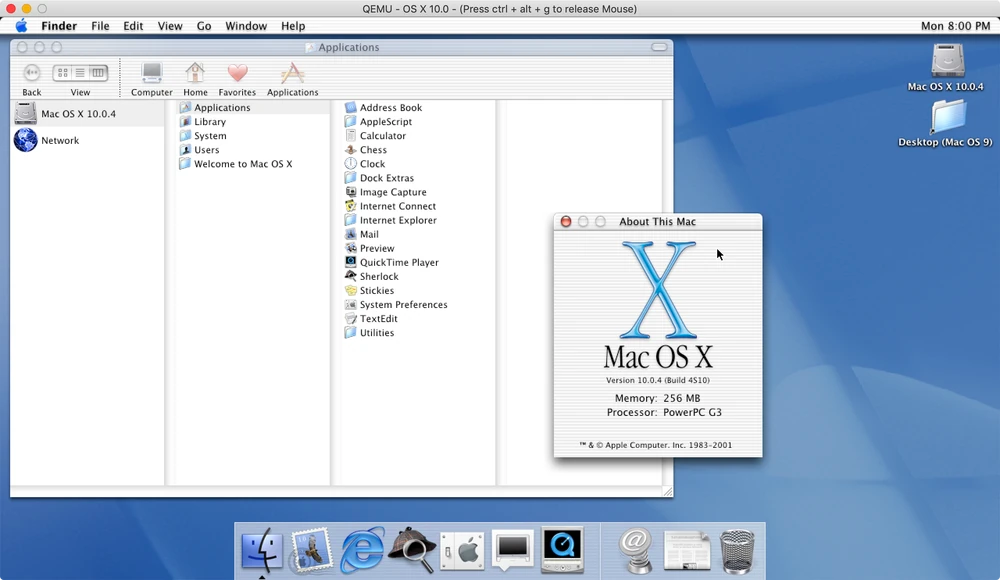
2. Mac OS X 10.1 (Puma)
Rolled out on September 25, 2001, Mac OS X Puma was Apple’s second major release that delivered a performance boost. It also featured an Aqua interface with several improvements like simplified CD & DVD burning, extensive printer support, and new additions in Finder.
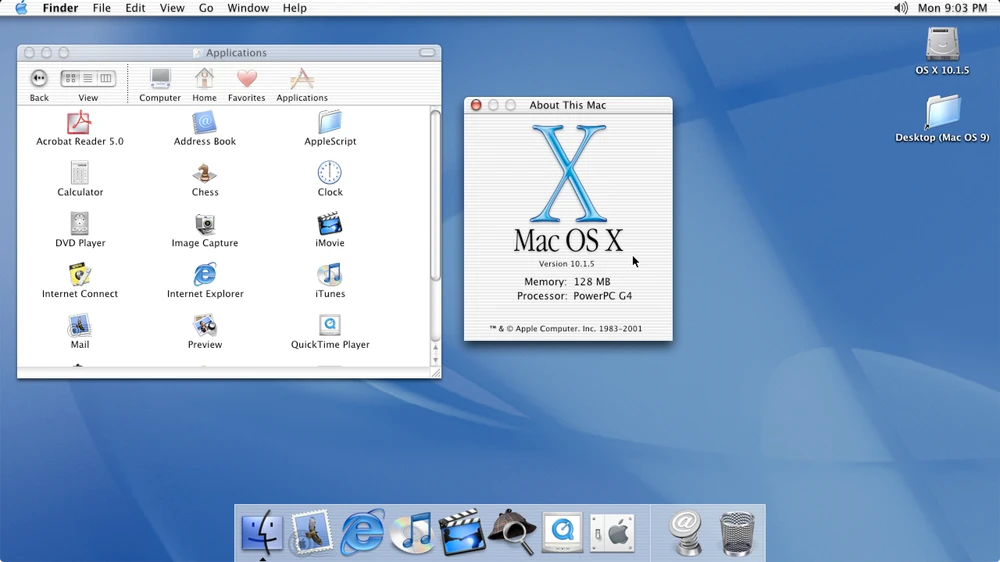
3. Mac OS X 10.2 (Jaguar)
On August 23, 2002, Apple launched the Mac OS X Jaguar that added the much-useful Search feature to Finder. Yes, the previous Mac OS versions didn’t have this feature. Mac OS X 10.2 came with a larger set of features and apps, including MPEG-4 support for QuickTime, an Accessibility API called Universal Access, and some privacy additions. Jaguar also changed the Mac logo that appeared on the start-up from color to gray.
Besides, some of the most popular apps were born with this Mac OS version. Interestingly, a few of them continue to live even today like Mail and Contacts.
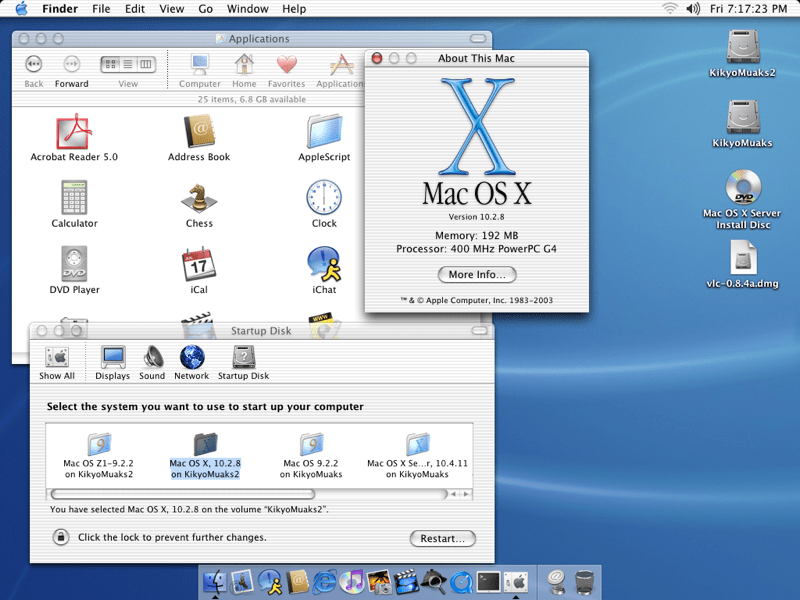
4. Mac OS X 10.3 (Panther)
Launched on October 24, 2003, Mac OS X Panther officially replaced Internet Explorer on Mac. It made Safari, the default web browser on Mac. In addition, Panther brought 150+ new features like the following:
- Font book
- Xcode developer tools
- Updated Finder interface
- FileVault
- Fax support
- Faster user switching
- Built-in X11 support
- iChat AV video-conferencing software
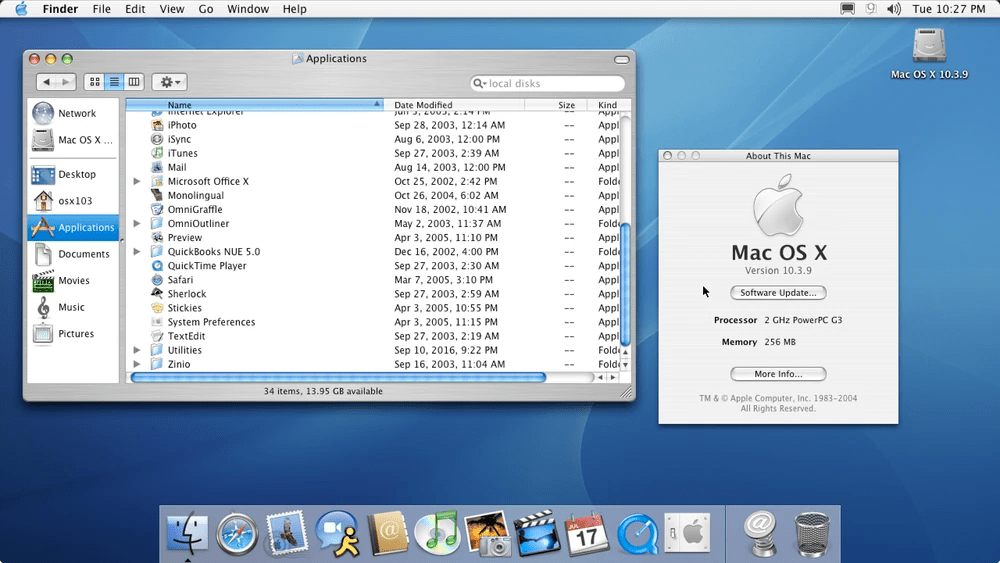
5. Mac OS X 10.4 (Tiger)
Rolled out on April 29, 2005, Mac OS X Tiger was a pretty big update that delivered more than 200 features and improvements. During this time, Apple also switched to Intel processors. So, Tiger was the first operating system on Intel-based Macs. Apple described Mac OS X 10.4 as the “world’s most advanced operating system”.
Apple’s fifth software update brought the following:
- Spotlight
- VoiceOver
- Automator
- Xcode 2.0
- Dashboard
- Dictionary and thesaurus
- Grapher
- Enhanced Japanese fonts
- Improved syncing features

6. Mac OS X 10.5 (Leopard)
Apple’s sixth major Mac operating system was released on October 26, 2007, and it was one of the most changing Mac systems. Mac OS X Leopard greatly changed the Mac desktop with the introduction of a Dock, a new menu bar, and Stacks. It came in two editions. One was a desktop or personal computer version, which cost $129. The second was a server version (Mac OS X Server) which cost $499.
Mac OS X Leopard arrived with the following features:
- Spotlight enhancements
- Support for 64-bit apps
- Alexa
- Time Machine
- Improved Automator
- Improved 3D dock
- Objective-C 2.0 runtime
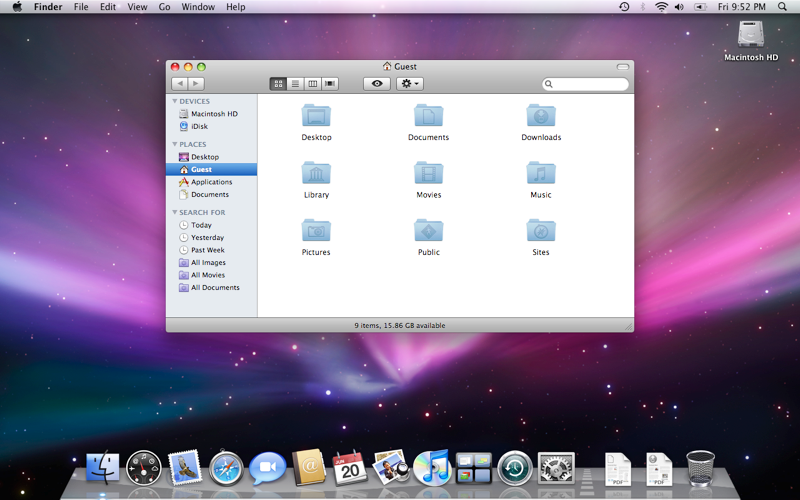
7. Mac OS X 10.6 (Snow Leopard)
Rolled out on August 28, 2009, Mac OS X Snow Leopard was Leopard’s successor and Apple’s answer to Windows XP. It primarily focused on expanding 64-bit architecture and introduced the App Store as well. Snow Leopard was introduced at a low price of $29, which attracted more sales upon release.
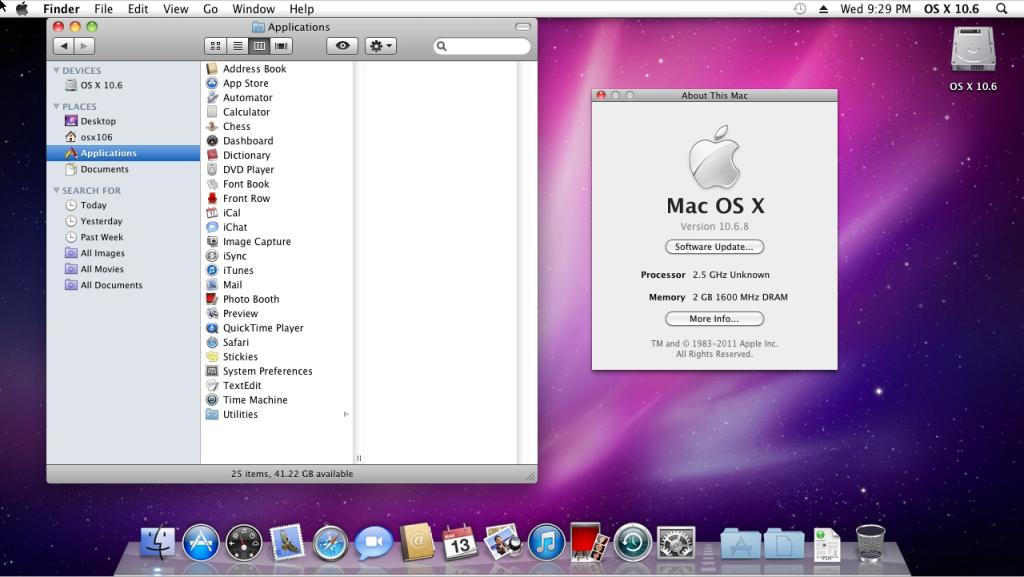
8. Mac OS X 10.7 (Lion)
Released on July 20, 2011, Mac OS X Lion brought several useful enhancements from iOS to Mac, including launchpad, multi-touch gestures, and more. Introduced at $19.99, Apple sold $1 million in sales on the first day of the Mac OS X Lion release. Back then, many users criticized Mac OS X 10.7 for “natural scrolling,” which moved the content up when you scroll down. At that time, the users wanted the content to move down when they scroll down. That’s what Windows did.
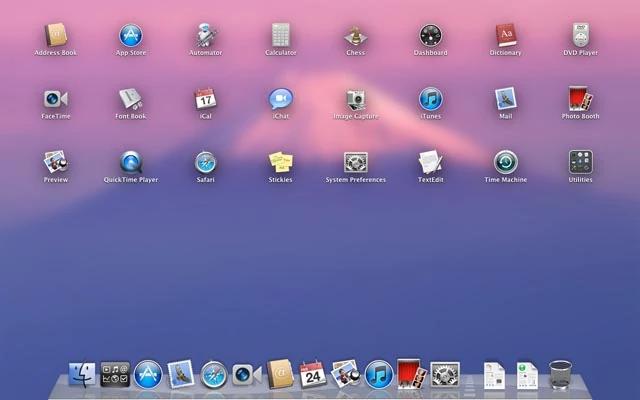
9. OS X 10.8 (Mountain Lion)
Introduced on July 25, 2012, OS X Mountain Lion was the last operating system to be sold by Apple. After that, all the software updates were available for free. Mountain Lion arrived with an array of features that made Mac a more comfortable machine.
The most notable upgrades include the Notification Center, Share Sheets, and more. Besides, Macs got support for some popular iOS apps like Reminders, Messages, and Notes. Mountain Lion also turned iCal into Calendar and iChat into iMessage.

10. OS X 10.9 (Mavericks)
Launched on October 22, 2013, Mavericks was the tenth major update of OS X and the first Mac operating system available on the Mac App Store for free. With this, Apple continued its efforts to bring OS X more in line with iOS, by getting more iOS apps to Mac. Some of the major updates include iCloud Keychain, Maps, iBooks, Tags, and more.
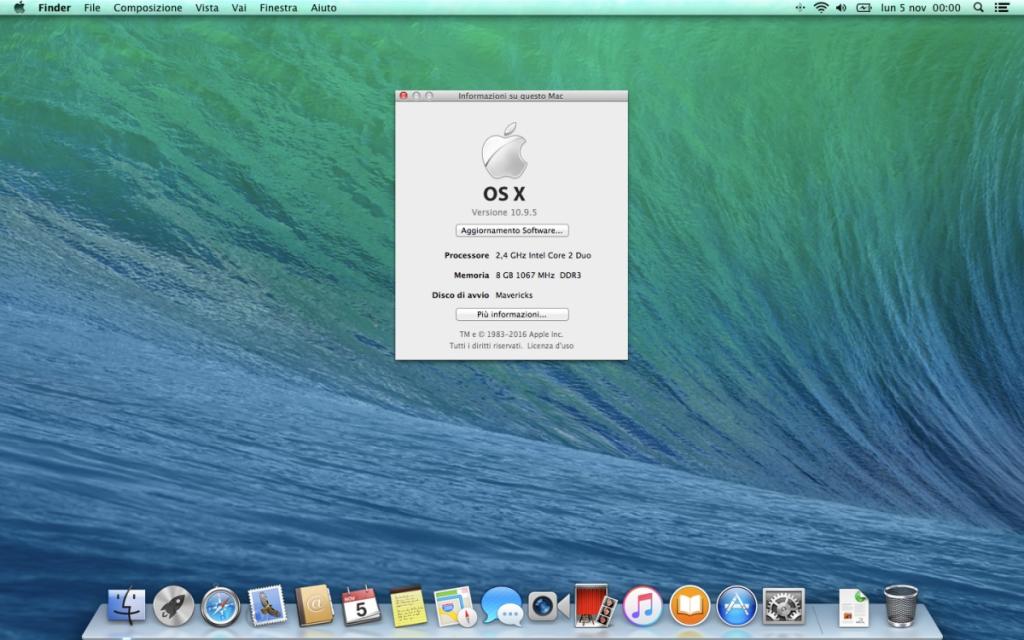
11. OS X 10.10 (Yosemite)
Born on October 16, 2014, OS X Yosemite made an appearance with the biggest redesign in years for a Mac. Apple introduced some small changes like thin fonts and new color schemes that align more with the iOS design. For a better cross-device experience, Yosemite brought Handoff and Continuity features for Mac users. Some other notable features include:
- Widgets
- Ability to take iPhone calls from desktop
- Darker night theme
- Instant hotspot
- “Today view” in Notifications centre
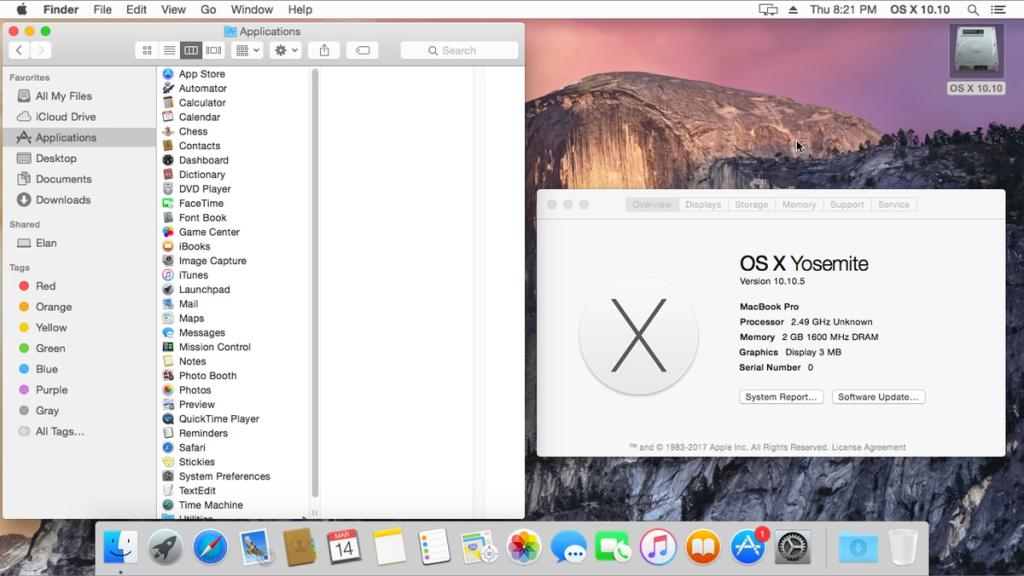
12. OS X 10.11 (El Capitan)
Apple rolled out El Captain on September 30, 2015, intending to deliver a performance boost to its Mac lineup. The twelfth major software update was faster and more powerful than the previous offerings. It focused more on improving everyday activities, for instance, it offered faster response when launching apps and emails. Also, Split View’s dual-pane emerged in the El Captain era.
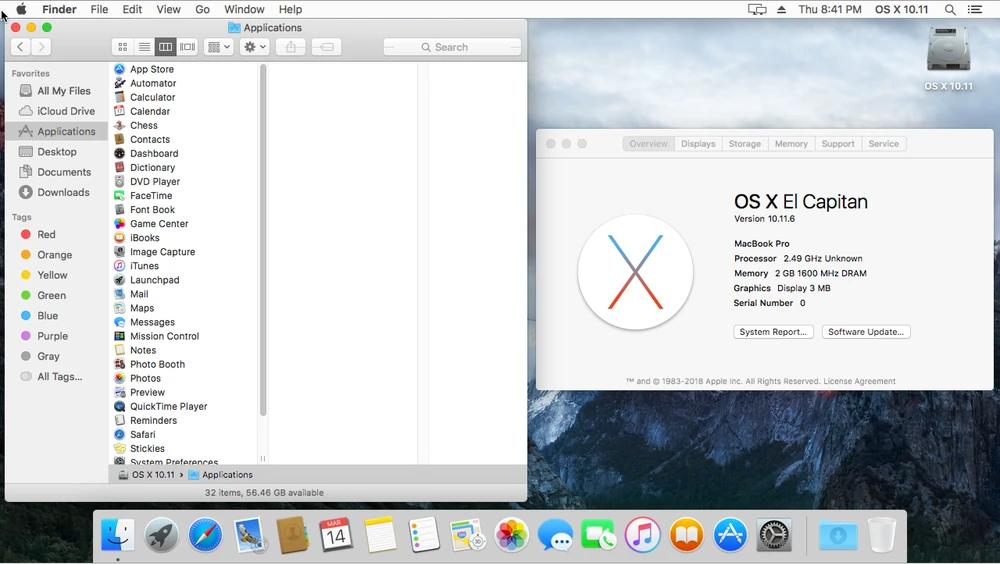
13. macOS 10.12 (Sierra)
Arrived on September 20, 2016, macOS Sierra brought some other iOS perks like unlocking Mac with an Apple Watch. The thirteenth major software release of Apple’s desktop also brought the following notable features on Macs:
- Apple Pay
- Picture-in-Picture support for Safari and iTunes
- Safari-inspired tags
- Optimized storage feature
- Rich media support in Messages
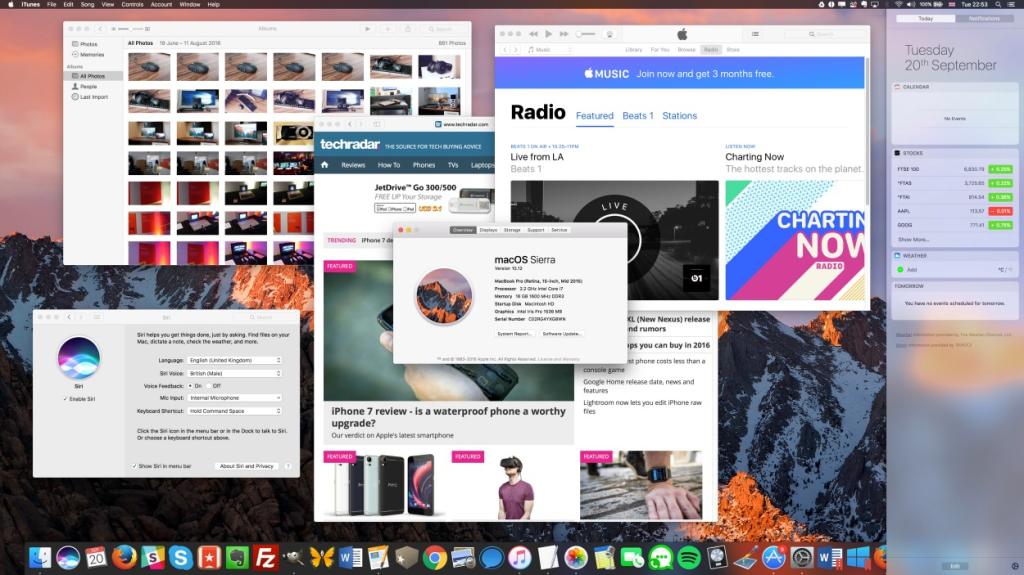
14. macOS 10.13 (High Sierra)
Apple’s macOS High Sierra made its debut on September 25, 2017, and focused on data, video, and graphics. It added a new video standard called HEIC and switched to Apple File System (APFS) as the default. The Photos app gets new editing tools, improved recognition, and more. Besides, there were enhancements in Mail, Safari, and iCloud.
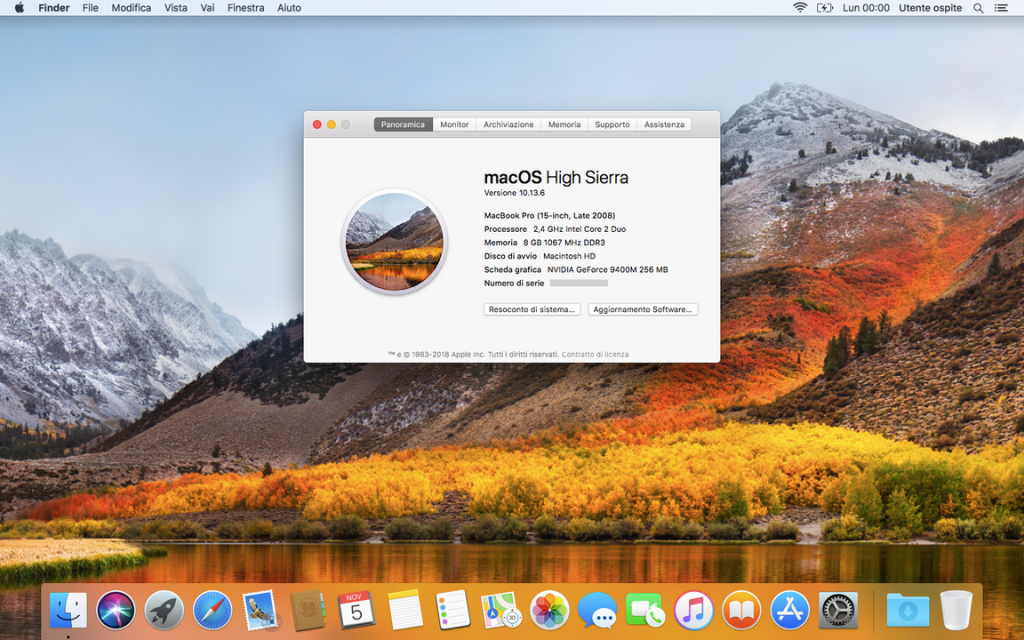
15. macOS 10.14 (Mojave)
Launched on September 24, 2018, macOS Mojave system-wide dark mode on Macs. Users could previously use dark mode, but it was only applied to the dock and menu bar. Other important features include a Dynamic desktop with changing wallpapers, iOS-inspired wallpapers, Quick actions, and Desktop Stacks.
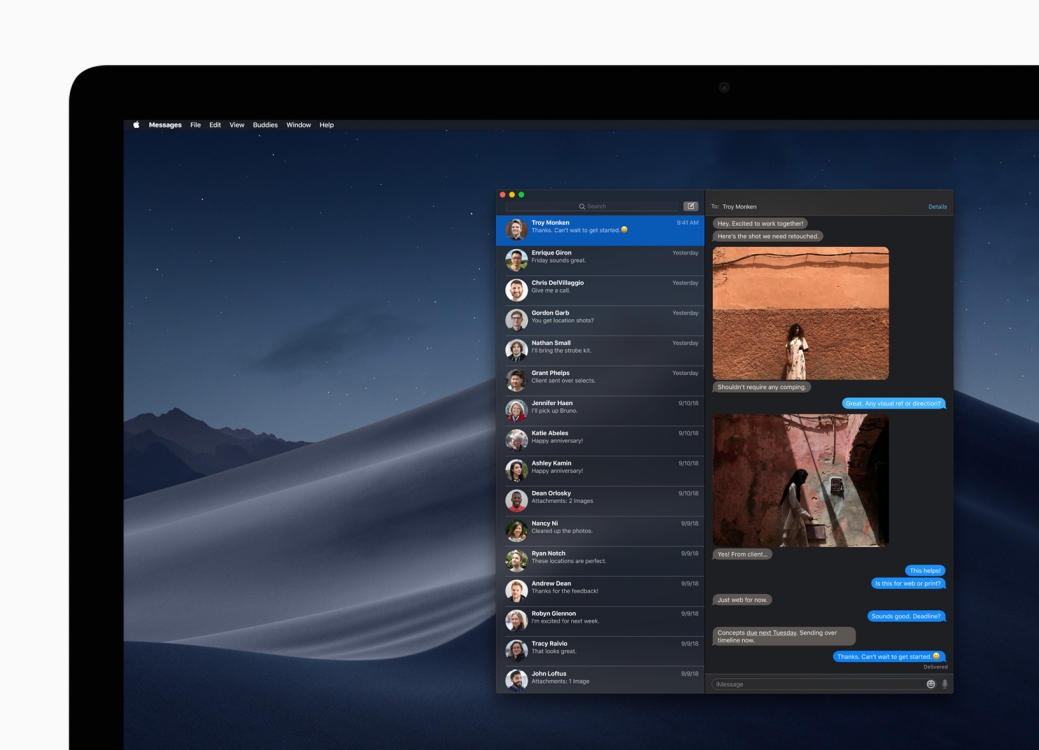
16. macOS 10.15 (Catalina)
On October 7, 2019, Apple came up with macOS Catalina which offers better performance and enhanced user-friendliness. It added several new apps and also removed some old ones, the most prominent being iTunes. That year marks the death of iTunes, bringing three dedicated platforms- Apple Music, Podcasts, and Apple TV. Catalina also added the Sidecar feature that allows a user to connect an iPad screen to the Mac. Other notable additions include Screen Time, Find My app support, the redesigned Reminders app, and more.
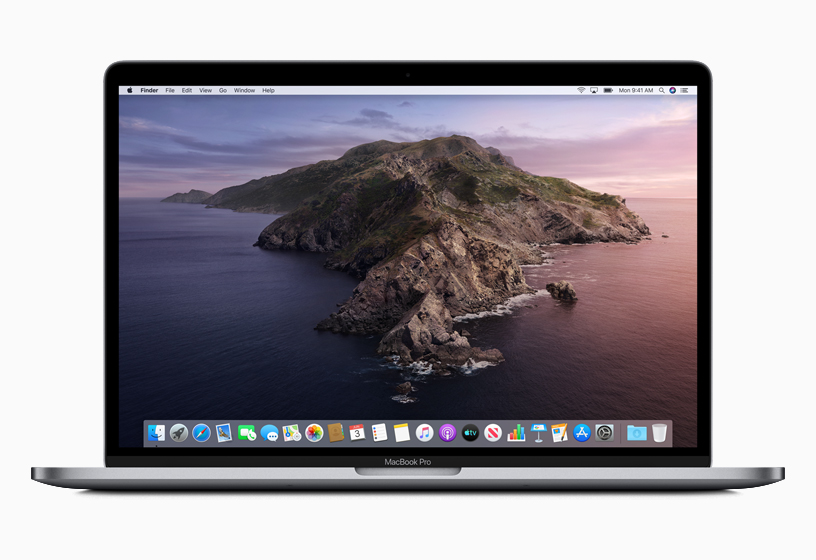
17. macOS 11 (Big Sur)
Breathed into life on November 10, 2020, Big Sur is one of the important names to remember in macOS history. It arrived with a huge design change and became the first macOS to power Apple Silicon Macs. Also, it was the first macOS version that allowed iOS apps to run natively on Macs (what we call Universal apps). Other standout features include better UI/UX, faster Safari, improved search in Messages, and more.
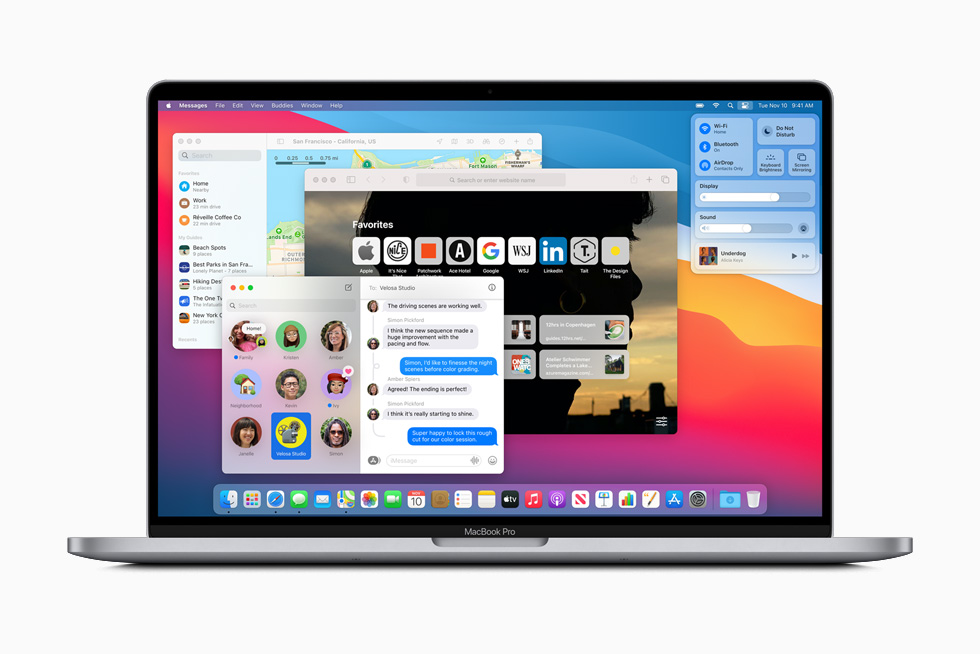
18. macOS 12 (Monterey)
On October 25, 2021, macOS Monterey replaced Big Sur and brought several significant features like SharePlay, Live Text, redesigned Safari with tab groups, Shortcuts app, Quick note feature, and Focus modes. In addition to this, Monterey added Universal Control that allows a seamless transition between macOS and iOS devices. For instance, you can move the pointer between your Mac and iPad.
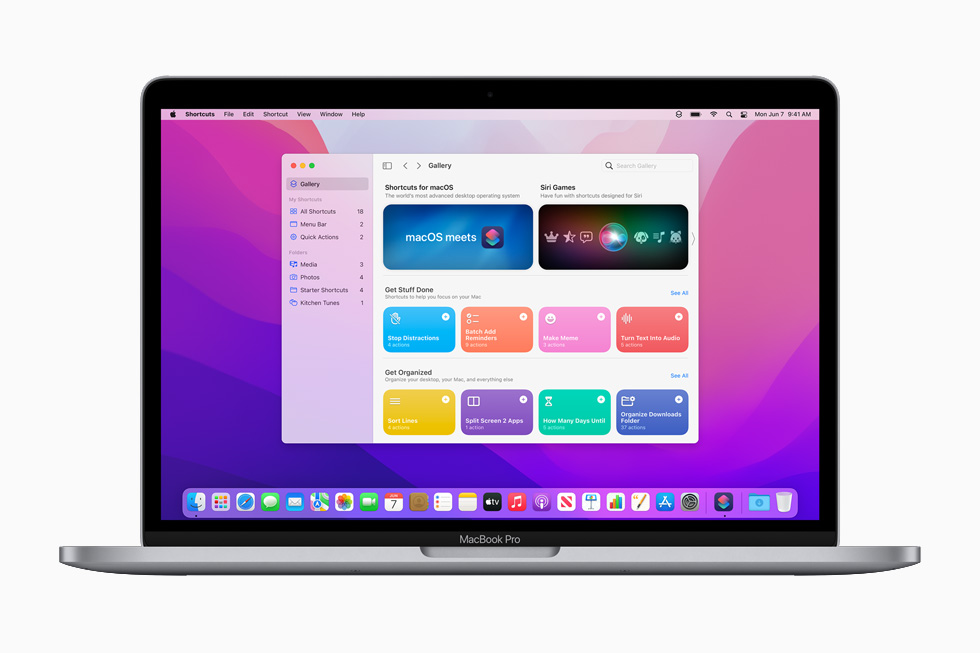
19. macOS 13 (Ventura)
On October 24, 2022, Apple rolled out macOS Ventura with a huge interface change, thanks to the Stage Manager feature. It automatically arranges your active windows in stacks and you can even create groups of apps based on what you’re doing. Apart from this, macOS Ventura brought a Continuity Camera, SharePlay in Messages, a Desk view, Undo Send in Mail, and more.
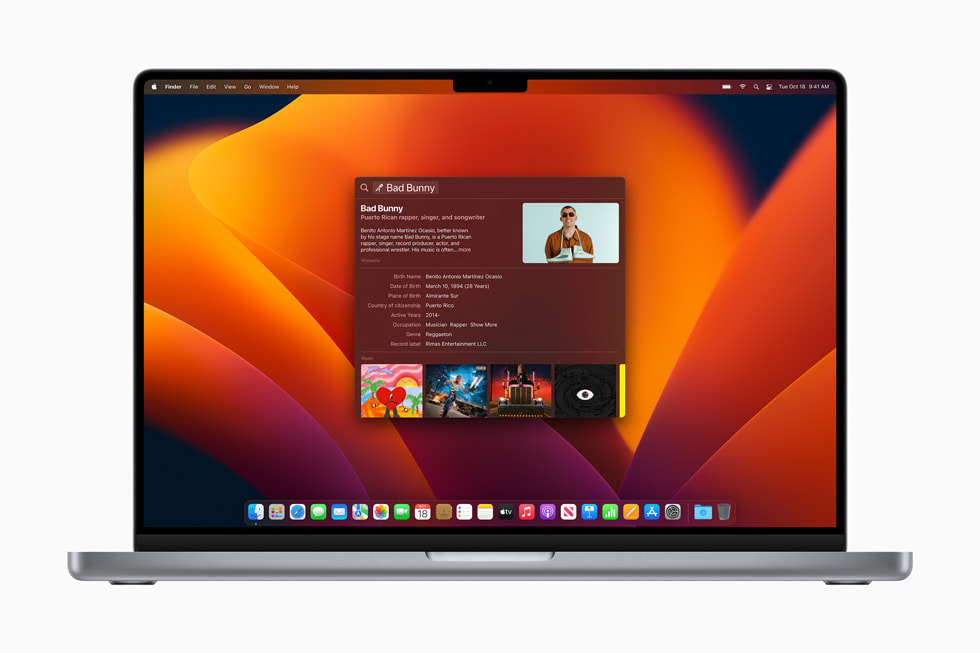
20. macOS 14 (Sonoma)
Released on September 26, 2023, macOS Sonoma brings a handful of upgrades over its predecessors. It offers some brand-new features like desktop widgets, Safari profiles, redesigned presenter view, and more. You can also add FaceTime reactions to your video calls to make everything more fun and intuitive. Besides, there are several hidden features of macOS Sonoma that can make your life easier.
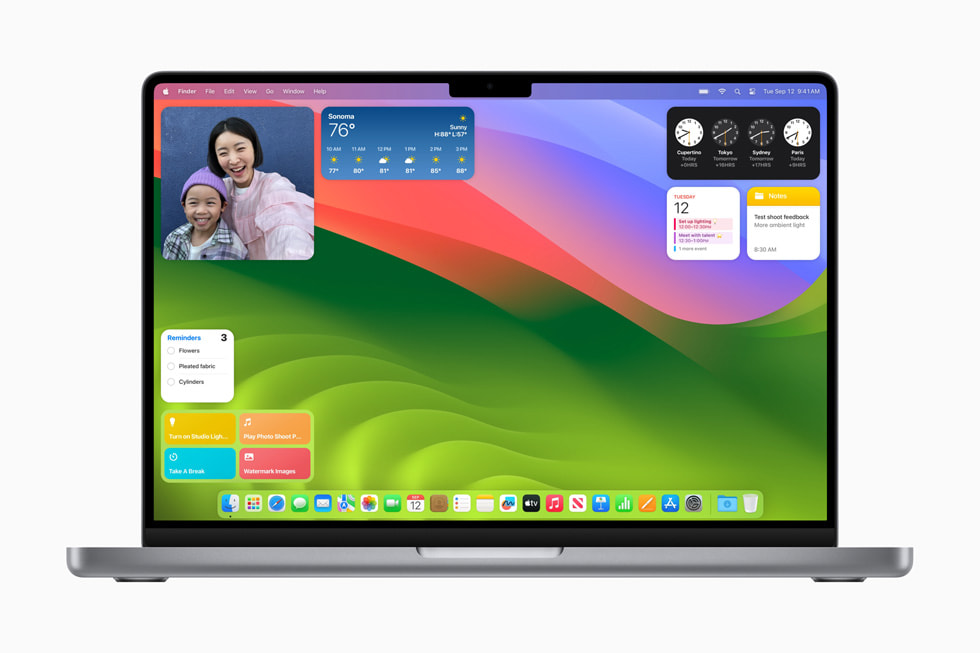
21. macOS 15 (Sequoia)
Apple announced the latest version of its Mac operating system, macOS 15 at its WWDC 2024 keynote event on June 10, 2024. Dubbed macOS Sequoia, the latest macOS version arrives with a raft of new features, interface tweaks, and improvements for Mac users. It brings several useful additions such as iPhone Mirroring, improved Windows Tiling, a dedicated Passwords app, a new Video Conferencing Presenter Preview, Safari updates with Highlights and redesigned Reader, iMessages scheduling, and upgrades to several native apps. Also, the new macOS version brings Apple Intelligence features to the Apple Silicon Macs.
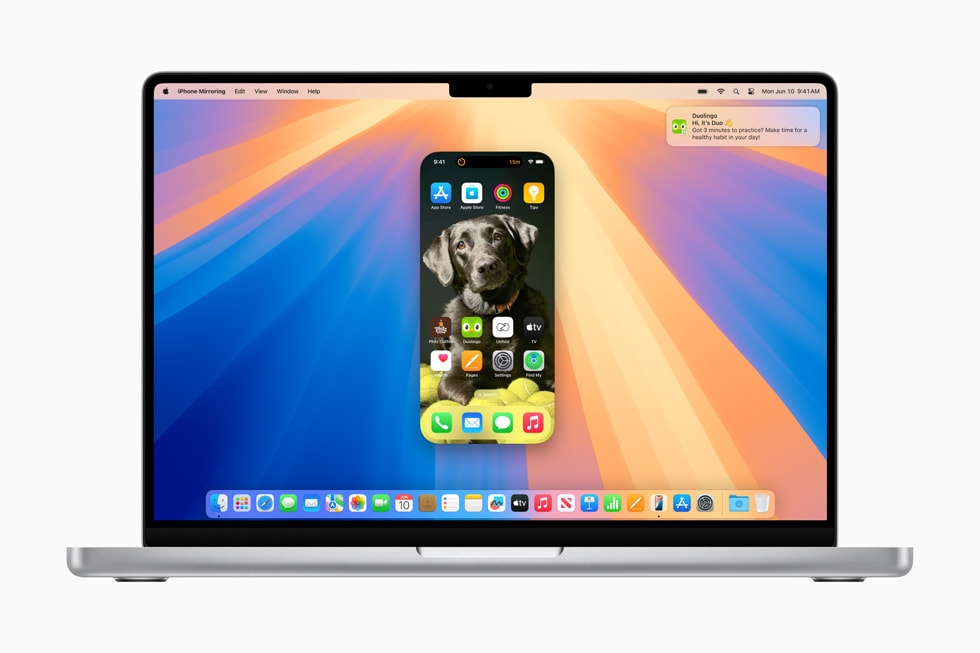
After months of beta testing, Apple launched the stable version of macOS Sequoia on September 16, 2024. Now that the stable, polished version is available, it’s worth upgrading to the latest macOS.
How to Check macOS Version on Your Mac?
You can always check the current macOS version is installed on your Mac. Here’s what you need to do:
- On your Mac, click on the Apple menu icon from the top left corner of the screen,
- Select “About This Mac”.
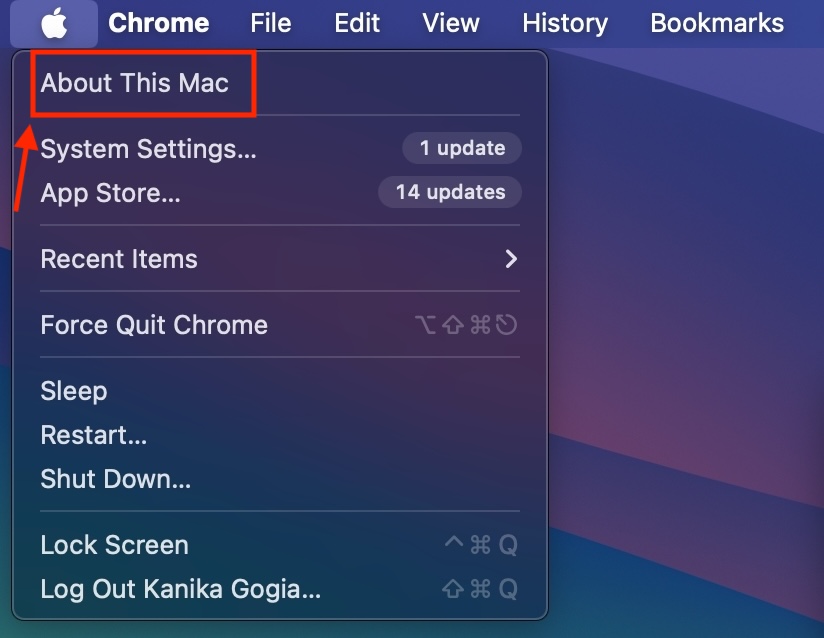
- This should bring up a small window displaying your Mac’s model, Serial number, current macOS version, and other information.
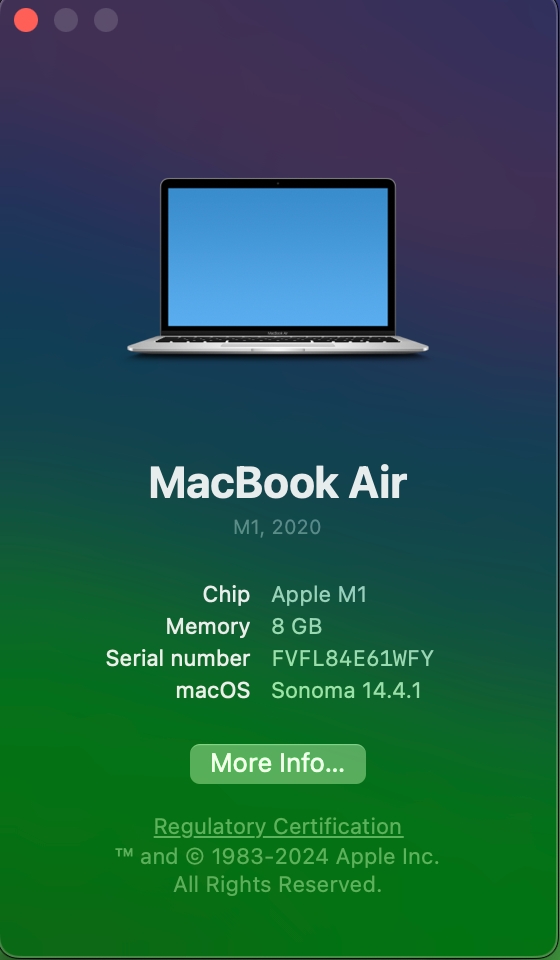
macOS 15 Sequoia is the latest macOS version available at the time of writing this article. Apple first previewed the macOS 15 Sequoia Developer Beta on June 10 at its WWDC 20204 Keynote event. The stable version of macOS 15 Sequoia was released on September 16, 2025. The new version offers an array of new features like iPhone mirroring, a new Passwords app, improved Safari browsing, advanced gaming, and more.
Currently, Apple offers security updates to macOS Monterey, macOS Ventura, and macOS Sonoma. So, macOS 12 Monterey is the oldest macOS still supported in 2024.
Heroes World Codes (October 2024): Get FREE Spins
AFK Arena Codes (October 2024)
Stumble Guys Codes (October 2024)

![Full List of All MacOS Versions in Order [2001 to 2023]](https://i2.wp.com/howto.softmany.com/wp-content/uploads/2023/08/full-list-of-all-macos-versions-in-order.jpg)
